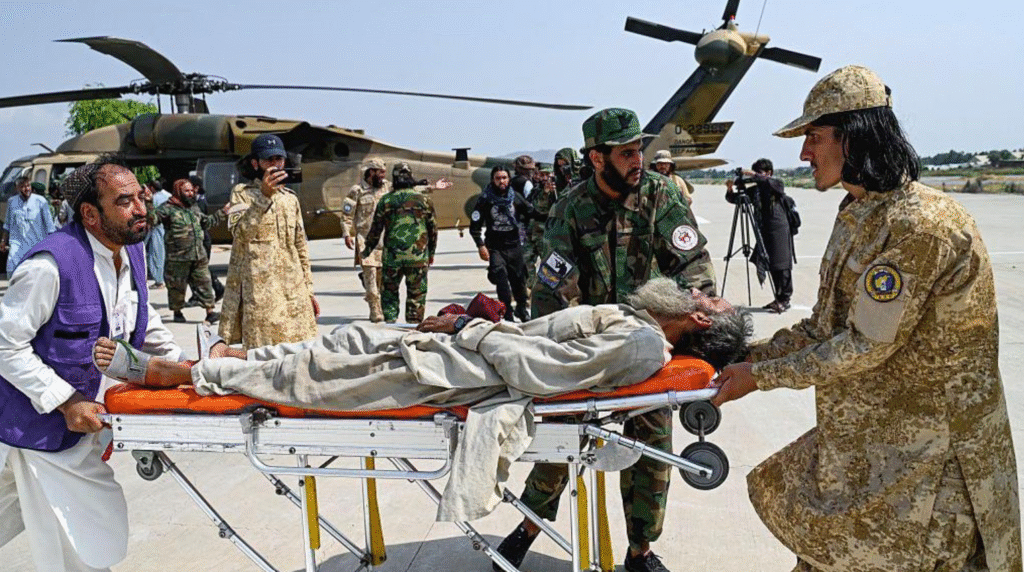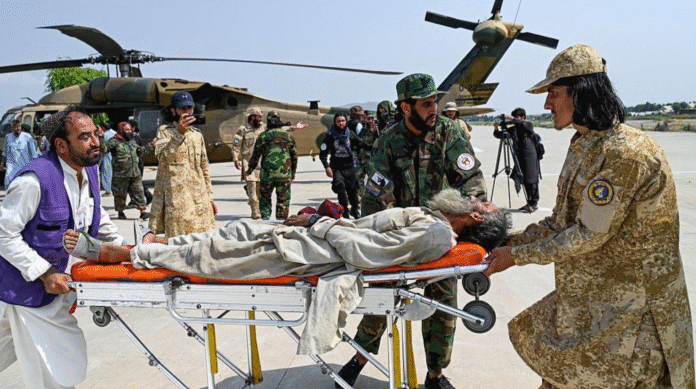Afghan Earthquake Tragedy: 7 Shocking Facts About the 1,400 Deaths
The Afghan earthquake tragedy has left the nation reeling after one of the deadliest natural disasters in recent years. With the death toll climbing past 1,400 and thousands more injured, survivors are trapped in rubble while rescuers struggle against time, terrain, and dwindling international aid. Here’s everything you need to know about this devastating event.
1. Death Toll Surges Beyond 1,400
The Taliban government announced that more than 1,400 people have died following a massive 6.0-magnitude earthquake that struck eastern Afghanistan late Sunday night. Over 3,000 others have been reported injured.
The hardest-hit area was Kunar province, where entire mud-brick villages crumbled under the force of the quake. Officials fear the toll could climb even higher as rescuers uncover more victims buried beneath collapsed homes.
2. Villages Flattened in Seconds
The Afghan earthquake tragedy devastated remote communities built from traditional mud and wood. When the quake struck, entire structures gave way, trapping families inside. The tremors occurred at night, catching most people while they were asleep.
Witnesses described the scene as apocalyptic, houses leveled, livestock killed, and survivors digging with bare hands in desperate attempts to rescue relatives.
3. Aftershocks Deepen the Fear
Adding to the chaos, the U.S. Geological Survey confirmed a 5.2-magnitude aftershock near the original epicenter. While no major damage was reported from the aftershock, it triggered widespread panic in already devastated communities.
Rescue teams fear further tremors could destabilize fragile structures, putting both survivors and emergency workers at risk.
4. Rescue Efforts Face Extreme Challenges
The Afghan earthquake tragedy is unfolding in rugged, mountainous terrain. Roads have been cut off, and many areas are only accessible by air. Taliban officials said dozens of commandos had to be air-dropped because helicopters could not safely land in the rough landscape.
Indrika Ratwatte, the UN’s resident coordinator for Afghanistan, described the situation as a “race against time” to reach survivors. With hospitals overwhelmed and clinics destroyed, injured victims are often left untreated for hours or even days.
5. International Aid Slowly Arrives
Despite Afghanistan’s political isolation, international aid has started to trickle in.
-
The United Kingdom pledged £1 million ($1.3 million), though funds are being directed to humanitarian agencies, not the Taliban government.
-
The European Union committed one million euros ($1.16 million) and is sending 130 tons of emergency supplies.
-
The United Arab Emirates, India, and China have all announced plans to provide disaster relief.
Still, humanitarian groups warn that assistance is far from enough. Competing global crises and shrinking aid budgets have left Afghanistan near the bottom of the international priority list.
6. Humanitarian Crisis on Top of Disaster
The earthquake comes at a time when Afghanistan is already in deep crisis. Since the Taliban takeover in 2021, the country has faced a collapsing economy, reduced international funding, and millions of Afghans deported from Iran and Pakistan.
Kate Carey, deputy head of the UN’s humanitarian office in Afghanistan, revealed that over 420 health facilities have shut down or suspended services due to lack of funding, including 80 in eastern provinces directly hit by the quake.
The result? Overstretched hospitals, limited trauma care, and shortages of vital supplies like antibiotics and surgical equipment. Survivors are being treated in overcrowded tents and makeshift wards.

7. Political Obstacles to Aid
The Afghan earthquake tragedy is also complicated by politics. The Taliban government is only officially recognized by Russia, and many donors are hesitant to work directly with its authorities due to restrictive policies on women and girls, including bans on female NGO workers.
This has slowed down coordination, as much of the aid is being funneled through independent humanitarian agencies instead of government channels. The Taliban has set up emergency camps in Kunar to manage aid distribution, but skepticism remains over how effectively resources will reach those most in need.
Final Thoughts
The Afghan earthquake tragedy is more than just a natural disaster, it’s a test of global solidarity. With over 1,400 lives lost, thousands injured, and entire communities flattened, survivors are pleading for urgent help.
As one UN official put it, “These are life and death decisions while we race against time to reach people.”
For more updates on global crises, visit Wil-News World.

